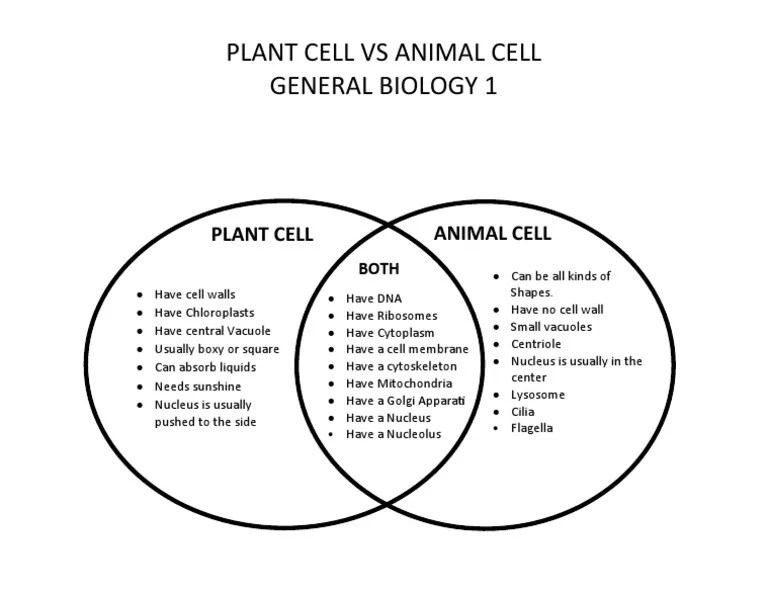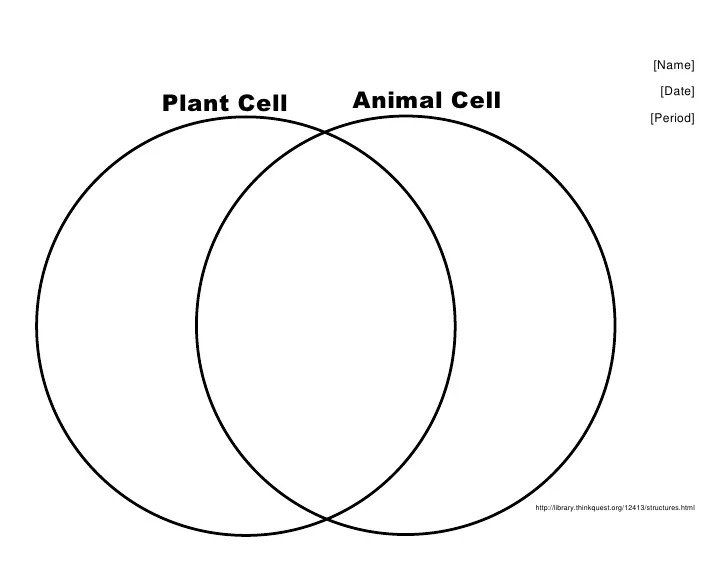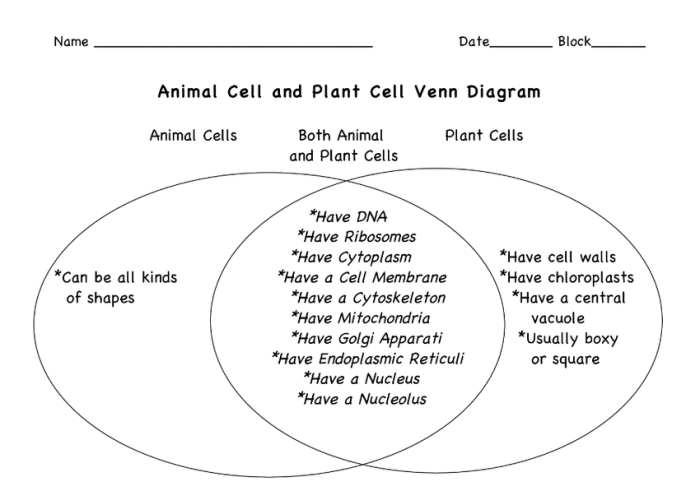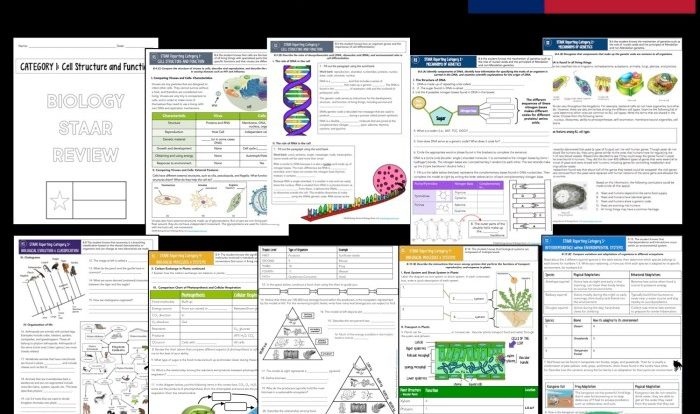Animal cells vs plant cells venn diagram – Delving into the fascinating realm of cell biology, we present an in-depth exploration of animal cells vs plant cells through an illustrative Venn diagram. This comparative analysis unveils the unique characteristics and shared features that define these fundamental units of life.
The subsequent paragraphs meticulously dissect the cellular structures, cell walls, chloroplasts, vacuoles, and cell division mechanisms, highlighting the distinctive attributes of animal and plant cells. By elucidating these key differences and similarities, we aim to provide a comprehensive understanding of the intricate world of cells.
Cell Structures

Animal and plant cells share many fundamental structures, such as a cell membrane, cytoplasm, and nucleus. However, there are also some unique structures found in each type of cell.
Animal Cell Structures
- Centrosomes: Structures involved in cell division.
- Lysosomes: Organelles containing enzymes that break down waste materials.
- Peroxisomes: Organelles involved in detoxification and metabolism.
Plant Cell Structures
- Cell wall: A rigid structure surrounding the cell membrane, providing support and protection.
- Chloroplasts: Organelles containing chlorophyll, responsible for photosynthesis.
- Vacuole: A large, fluid-filled organelle that stores water, nutrients, and waste products.
| Animal Cell Structures | Plant Cell Structures |
|---|---|
| Centrosomes | Cell wall |
| Lysosomes | Chloroplasts |
| Peroxisomes | Vacuole |
Cell Walls
One of the most significant differences between animal and plant cells is the presence or absence of a cell wall.
Animal Cells
Animal cells do not have a cell wall. Instead, they have a flexible cell membrane that allows for cell movement and shape changes.
Plant Cells, Animal cells vs plant cells venn diagram
Plant cells have a rigid cell wall made primarily of cellulose. The cell wall provides support and protection to the cell, allowing it to withstand high internal pressure.
The cell wall also plays a role in regulating water uptake and transport within the plant.
[Ilustrasi: Diagram sel hewan dan sel tumbuhan, menunjukkan perbedaan struktur dinding sel]
Chloroplasts: Animal Cells Vs Plant Cells Venn Diagram

Chloroplasts are organelles found exclusively in plant cells.
Structure and Function
Chloroplasts contain chlorophyll, a green pigment that absorbs sunlight. The sunlight energy is used to convert carbon dioxide and water into glucose (sugar) through the process of photosynthesis.
[Gambar: Diagram kloroplas, menunjukkan struktur dan lokasi di dalam sel tumbuhan]
Vacuoles

Vacuoles are membrane-bound organelles found in both animal and plant cells, but they differ in size, number, and function.
Animal Cells
Animal cells typically have small, numerous vacuoles that function in various cellular processes, such as storage, digestion, and waste disposal.
Plant Cells, Animal cells vs plant cells venn diagram
Plant cells have a large, central vacuole that occupies up to 90% of the cell volume. The vacuole stores water, nutrients, and waste products. It also helps maintain cell turgor, which is essential for plant growth and support.
| Animal Cell Vacuoles | Plant Cell Vacuoles |
|---|---|
| Small, numerous | Large, central |
| Storage, digestion, waste disposal | Storage, turgor maintenance |
Cell Division
Cell division is essential for the growth and development of organisms.
Animal Cells
Animal cells divide through mitosis, a process that produces two genetically identical daughter cells.
Plant Cells, Animal cells vs plant cells venn diagram
Plant cells can divide through both mitosis and meiosis. Mitosis produces genetically identical daughter cells, while meiosis produces haploid gametes (sex cells) with half the number of chromosomes as the parent cell.
[Diagram: Bagan alur yang menggambarkan langkah-langkah mitosis dan meiosis pada sel hewan dan sel tumbuhan]
Detailed FAQs
What is the primary function of chloroplasts in plant cells?
Chloroplasts are organelles responsible for photosynthesis, the process by which plants convert sunlight into energy.
How do vacuoles differ in size and function between animal and plant cells?
Animal cells typically have smaller and more numerous vacuoles, while plant cells have a single, large central vacuole that plays a crucial role in maintaining cell shape and turgidity.
What are the key differences between mitosis and meiosis in animal and plant cells?
Mitosis results in two identical daughter cells, while meiosis produces four genetically diverse gametes. In plant cells, cytokinesis occurs via cell plate formation, whereas in animal cells, it occurs through cleavage furrow formation.
